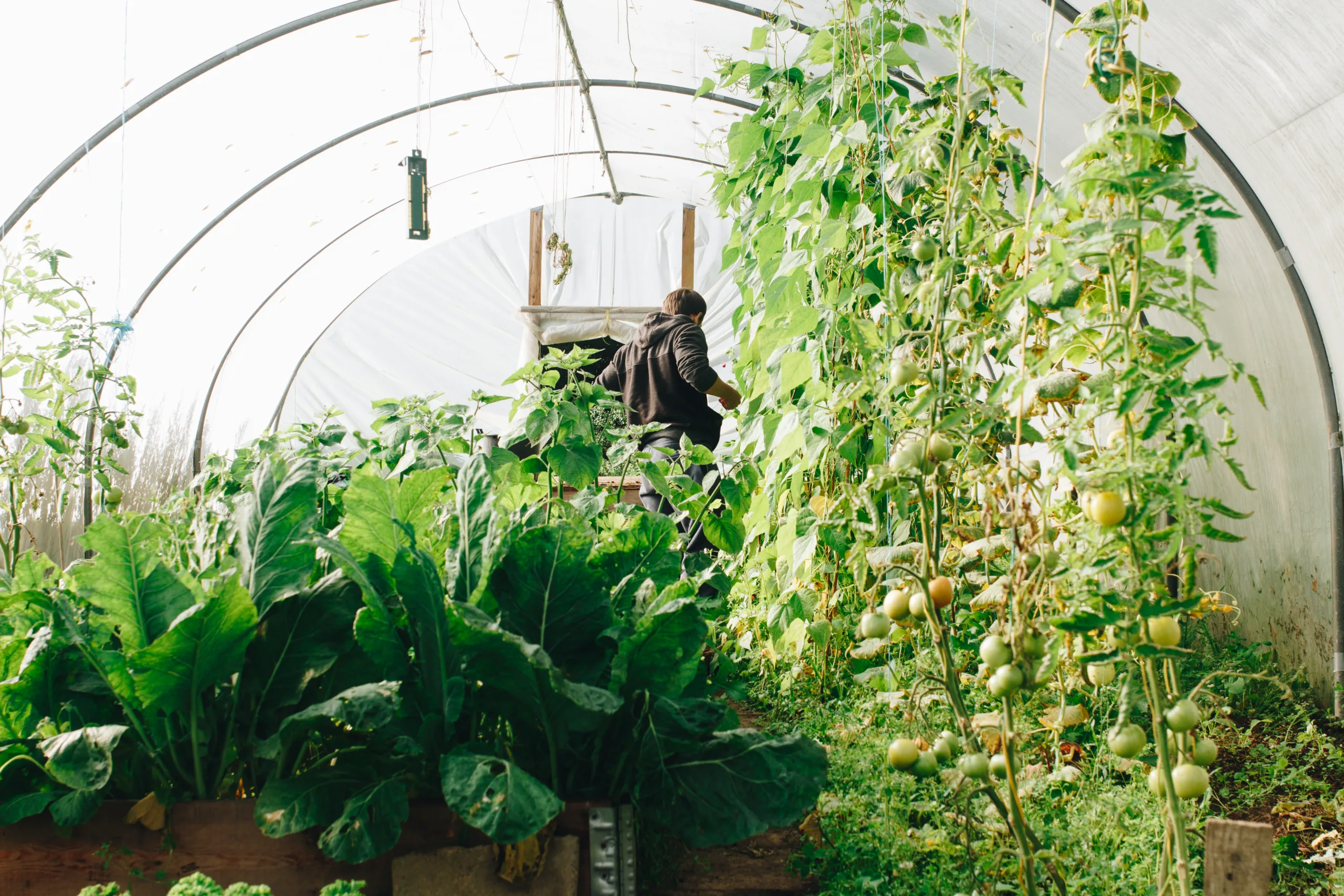Do you want to grow your own trees, but aren’t sure where to start? Growing trees for dummies is a great resource for beginners. It covers everything from types of soil and how to prepare the ground for planting, to watering and fertilizing your plants. Whether you want to grow fruit trees, shade trees, or decorative trees, this guide will show you how. Learn what type of tree is best for each environment, how to properly care for your plants, and how to ensure successful growth. With this guide, even the greenest of gardeners can become an expert in growing their own trees!
When it comes to identifying the right tree species for a particular area, it is important to consider the climate, soil type, and available space. Additionally, it is helpful to research the different species of trees that grow in the local area and identify which ones are most likely to thrive. Ultimately, by taking into account these factors, you can determine which tree species is best suited for your particular area.
Choosing the Right Location
Choosing the right location is one of the most important decisions a business can make. It’s a key factor in determining your success, and can have a lasting impact on your business’s growth and profitability.
When considering where to open your business, you must take into account several factors including target market, competition, access to resources, and cost. You should also consider the local economy, culture, and infrastructure.
Your target market should be at the top of your list when selecting a location. You need to make sure that you choose an area that has enough potential customers to support your business. You should also research potential competitors in the area so you can determine if there is already too much competition for what you are offering.
It is also important to consider access to resources when selecting a location. This includes access to suppliers, transportation networks, and other important infrastructure. You will need these resources to operate efficiently and profitably. Additionally, you must consider the cost of renting or buying property in the area as this will have an impact on your bottom line.
Finally, it is essential that you investigate the local economy before making a decision. The economic conditions of an area are an important indicator of its potential for growth in the future. Additionally, you should look into local culture and other factors such as crime rate and quality of life that could affect your business’s success or failure in an area.
Choosing the right location for your business is critical for its success and long-term sustainability. Taking into account factors such as target market, competition, access to resources and cost are essential when making this decision. Additionally researching local economy, culture and infrastructure are also necessary for making an informed decision about where to open up shop
Preparing Soil for Planting
Before planting your garden, you need to ensure that your soil is ready and of the best quality. The best way to do this is to prepare the soil for planting. Preparing the soil for planting involves a number of steps, including testing the soil’s pH levels, adding organic matter, and tilling the soil.
Testing the soil’s pH levels is important as it helps determine if your soil is acidic or alkaline. You can buy a simple pH test kit from any garden centre or hardware store that will tell you exactly what type of soil you have. Once you know what type of soil you have, you can then adjust it accordingly by adding organic matter or lime. Adding organic matter such as compost or manure can help improve the structure and drainage of your soil, as well as provide essential nutrients for plants.
Tilling is another important step in preparing the soil for planting. Tilling involves breaking up large clumps of dirt and aerating the ground to allow air and water to penetrate more easily. This helps create an ideal environment for root growth and will ensure that your plants get all the nutrients they need to thrive. Tilling also helps break down weeds so they don’t compete with your plants for resources.
Preparing your soil for planting doesn’t have to be a difficult task. By following these simple steps, you can ensure that your garden has all of the necessary ingredients to produce healthy, vibrant plants that will last you many years!
Planting Trees
Planting trees is an important role in keeping our environment healthy. Trees help to reduce air pollution, prevent soil erosion, and provide habitats for wildlife. They also provide us with oxygen and absorb carbon dioxide. Trees can also help to reduce the effects of climate change by providing shade and cooling the air around them. Planting trees is a great way to contribute to a healthier planet.
When planting trees, it is important to consider the type of tree you are planting, as some species may be more suitable for your climate than others. It is also important to make sure that your tree is planted in an area where it will receive adequate sunlight and water so that it can thrive. Additionally, you should ensure that the soil you are planting in is well-drained and has enough nutrients for the tree to grow properly.
When selecting a site for your tree, it is also important to consider any potential hazards that may be present such as power lines or buildings. Lastly, it is important to remember that planting trees takes time and patience – they need regular maintenance and care so that they can reach their full potential. With the right planning and care, your new tree can provide many benefits for years to come!
Watering and Fertilizing Trees
Watering and fertilizing trees is essential for their health and growth. Proper watering encourages the root system to grow deep and wide, allowing the tree to absorb more nutrients from the soil. It also helps keep the soil moist so that it can retain more water. Fertilizer helps provide essential nutrients that may be lacking in the soil, such as nitrogen, phosphorus, and potassium. It can also help correct an unbalanced pH level in the soil.
When watering your trees, make sure you use enough water to soak the entire root system. Trees should be watered deeply and infrequently – about once per week during times of drought or heat stress. For newly planted trees, you should water daily until they become established. Make sure to check your soil’s moisture level before you water – if it’s still moist, then wait a day or two before adding more water.
When fertilizing your trees, use a balanced fertilizer with an NPK ratio of 10-10-10 (nitrogen-phosphorus-potassium). Apply it in late winter or early spring when the soil is still cool and damp. Spread it evenly over a 6 foot radius around each tree’s trunk, taking care not to let any fertilizer touch the trunk itself. Water thoroughly after application to ensure that all of the fertilizer has been absorbed into the ground.

Pruning and Shaping Trees
Pruning and shaping trees is an important part of garden maintenance. Pruning helps to remove dead or damaged branches, allowing for better growth of the tree. It can also help to improve the shape of a tree, making it more aesthetically pleasing. Shaping is more focused on the form and structure of a tree, which can be used to create an eye-catching display in a garden or landscape. Proper pruning techniques are necessary to ensure that the tree remains healthy and safe.
The first step in pruning and shaping trees is to assess the overall health of the tree. Any dead or damaged branches should be removed as soon as possible, as they can affect the overall health of the tree. If there are any diseased branches, they should also be removed immediately so that they do not spread any further.
Once the overall health of the tree has been assessed, it is time to start pruning and shaping. Pruning should be done carefully, making sure not to damage any healthy branches or buds in the process. The goal is to remove any unnecessary branches without compromising the structure of the tree. Depending on what type of pruning is needed, different tools may be used such as shears, saws or loppers.
Shaping a tree involves more creativity than pruning does. The goal here is to create an aesthetically pleasing form that will enhance the beauty of a garden or landscape. Depending on what type of shape you want for your tree, different tools can be used such as chainsaws or hedge trimmers. Before beginning any shaping process, it’s important to have a clear idea in mind about how you want your final product to look like so that you don’t end up with something unexpected or undesired results at completion time .
Pruning and shaping trees can be daunting for some people but with proper tools and techniques it doesn’t have to be difficult. With patience and practice anyone can learn how to properly prune and shape trees in order to create an attractive outdoor space that will last for years to come!
Controlling Pests and Diseases
Pests and diseases can be a major problem for both indoor and outdoor plants. Effective pest and disease control is essential to ensure that plants remain healthy and productive. There are a variety of methods available for controlling pests and diseases, including chemical controls, biological controls, physical barriers, cultural practices, and other preventative measures.
Chemical controls are the most common method used to control pests and diseases. This method involves the use of insecticides, fungicides, herbicides, or other chemicals to kill or repel pests or pathogens. Chemical controls can be effective but can also have negative impacts on the environment if not used correctly.
Biological control is an alternative to chemical control that utilizes natural enemies of pests or pathogens to manage their populations. This method often involves introducing predators or parasites that feed on the pest species in order to reduce their numbers. Biological control is generally considered to be more environmentally friendly than chemical approaches but it can be difficult to ensure their effectiveness in all cases.
Physical barriers are another approach for controlling pests and diseases by creating a physical barrier between the plant and the pathogen or pest. This could involve using screens or even mulch around a plant in order to keep out insects or other potential threats. Physical barriers can be effective but may require ongoing maintenance in order to remain effective over time.
Cultural practices such as crop rotation, pruning, and proper fertilization can also help prevent pest outbreaks by creating an unfavorable environment for them to grow in. Additionally, proper sanitation measures such as cleaning up debris around plants can help reduce the spread of disease-causing organisms from one plant to another.
Finally, preventative measures such as monitoring plants regularly for signs of infestations or disease can help detect problems early when they are easier to resolve with fewer resources. Additionally, planting resistant varieties of plants may reduce the risk of certain pests or diseases becoming established in an area. By utilizing these methods together, gardeners can effectively manage pests and diseases without relying solely on chemical controls.
Mulching Trees
Mulching is an important part of tree care and maintenance. It helps to improve the soil structure and fertility, prevents soil erosion, and suppresses weed growth. Mulch can also moderate temperature fluctuations and conserve moisture in the soil. When applied correctly, mulch can help protect a tree’s root system from extreme temperatures and other environmental factors. There are several types of mulch materials available for use around trees, but the best choice depends on a variety of factors.
Organic mulches are materials such as shredded bark, wood chips, straw, or grass clippings that break down over time to add nutrients to the soil. These mulches should be applied at least three inches deep in order to create an effective barrier against weeds. However, organic mulches may need to be reapplied every year due to decomposition.
Inorganic mulches such as stone or rubber typically do not break down over time and require less frequent replacement than organic materials. In addition, they usually have better weed suppressing properties than organic materials. But they don’t add any beneficial nutrients to the soil like organic materials do.
When applying mulch around trees, it’s important to keep it away from the trunk by at least a few inches since too much mulch can lead to rot or insect infestations. Additionally, it’s best not to use fresh grass clippings as a mulch since they can contain high levels of nitrogen which could lead to fertilizer burn on the tree’s roots. Mulching is an important part of caring for trees and with proper application can provide numerous benefits!

Conclusion
Growing trees is a satisfying and beneficial hobby that can bring you closer to nature. Whether you’re a beginner or an experienced gardener, there are many techniques and tips you can use to ensure your trees thrive.
It is important to select the right tree species for your soil type and climate, and provide adequate care. You should plan your planting site carefully and prepare the soil appropriately before planting your tree. Mulching, watering, pruning, fertilizing, weeding, and pest control are all essential aspects of tree care that should be regularly monitored.
Finally, it is important to remember that growing trees takes time and patience. However, with the right knowledge and effort you can successfully grow healthy trees that will bring life to your garden for many years to come.
Mark Hoffman is a dedicated arborist and tree care specialist with over a decade of experience. His love for trees began when he visited Yosemite National Park as a teenager and was awestruck by the giant sequoias. Mark pursued his passion by studying forestry at Michigan Technological University, where he earned a Bachelor of Science degree.
Since then, he has worked tirelessly in the field of arboriculture, helping to preserve and protect trees in his community. His expertise and dedication have made him a respected leader in the industry and a valuable resource for anyone seeking advice on tree care.
